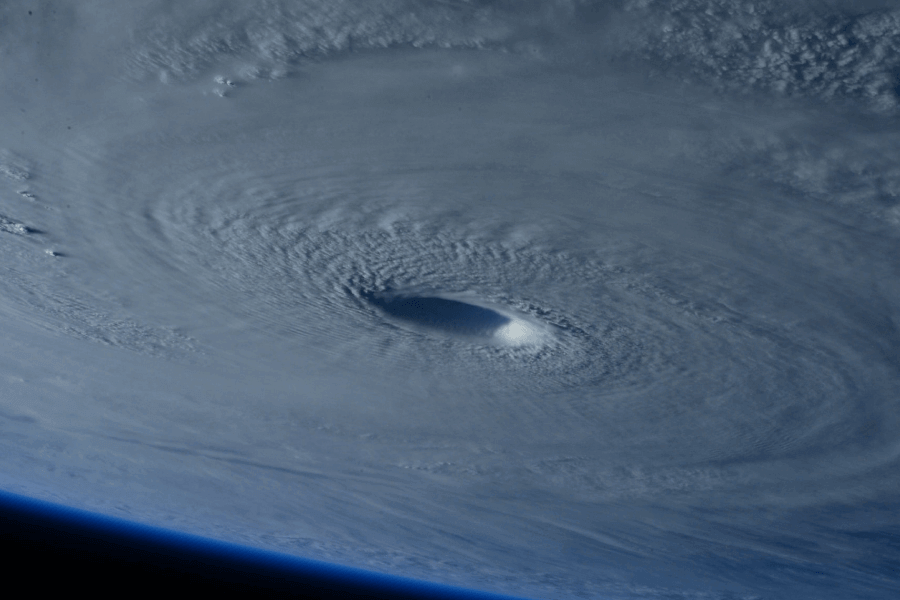Can Hurricanes be Moderated or Diverted?
A
A. Each year, massive swirling storms bringing along winds greater than 74 miles per hour wipe across tropical oceans and land on shorelines—usually devastating vast swaths of territory. When these roiling tempests strike densely inhabited territories, they have the power to kill thousands and cause property damage worth of billions of dollars. Besides, absolutely nothing stands in their way. But can we ever find a way to control these formidable forces of nature?
B
B. To see why hurricanes and other severe tropical storms may be susceptible to human intervention, a researcher must first learn about their nature and origins. Hurricanes grow in the form of thunderstorm clusters above the tropical seas. Oceans in low-latitude areas never stop giving out heat and moisture to the atmosphere, which brings about warm, wet air above the sea surface. When this kind of air rises, the water vapour in it condenses to form clouds and precipitation. Condensation gives out heat in the process the solar heat is used to evaporate the water at the ocean surface. This so-called invisible heat of condensation makes the air more buoyant, leading to it ascending higher while reinforcing itself in the feedback process. At last, the tropical depression starts to form and grow stronger, creating the familiar eye -- the calm centre hub that a hurricane spins around. When reaching the land, the hurricane no longer has a continuous supply of warm water, which causes it to swiftly weaken.
C
C. Our current studies are inspired by my past intuition when I was learning about chaos theory 30 years ago. The reason why long-range forecasting is complicated is that the atmosphere is highly sensitive to small influences and tiny mistakes can compound fast in the weather-forecasting models. However, this sensitivity also made me realise a possibility: if we intentionally applied some slight inputs to a hurricane, we might create a strong influence that could affect the storms, either by steering them away from densely populated areas or by slowing them down. Back then, I was not able to test my ideas, but thanks to the advancement of computer simulation and remote-sensing technologies over the last 10 years, I can now renew my enthusiasm in large-scale weather control.
D
D. To find out whether the sensitivity of the atmospheric system could be exploited to adjust such robust atmospheric phenomena as hurricanes, our research team ran simulation experiments on computers for a hurricane named Iniki that occurred in 1992. The current forecasting technologies were far from perfect, so it took us by surprise that our first simulation turned out to be an immediate success. With the goal of altering the path of Iniki in mind, we first picked the spot where we wanted the storm to stop after six hours. Then we used this target to generate artificial observations and put these into the computer model.
E
E. The most significant alteration turned out to be the initial temperatures and winds. Usually, the temperature changes across the grid were only tenths of a degree, but the most noteworthy change, which was an increase of almost two degrees Celsius, took place in the lowest model layer to the west of the storm centre. The calculations produced wind-speed changes of two or three miles per hour. However, in several spots, the rates shifted by as much as 20 mph due to minor redirections of the winds close to the storm’s centre. In terms of structure, the initial and altered versions of Hurricane Iniki seemed almost the same, but the changes in critical variables were so substantial that the latter one went off the track to the west during the first six hours of the simulation and then travelled due north, leaving Kauai untouched.
F
F. Future earth-orbiting solar power stations, equipped with large mirrors to focus the sun’s rays and panels of photovoltaic cells to gather and send energy to the Earth, might be adapted to beam microwaves which turn to be absorbed by water vapour molecules inside or around the storm. The microwaves would cause the water molecules to vibrate and heat up the surrounding air, which then leads to the hurricane slowing down or moving in a preferred direction.
G
G. Simulations of hurricanes conducted on a computer have implied that by changing the precipitation, evaporation and air temperature, we could make a difference to a storm’s route or abate its winds. Intervention could be in many different forms: exquisitely targeted clouds bearing silver iodide or other rainfall-inducing elements might deprive a hurricane of the water it needs to grow and multiply from its formidable eyewall, which is the essential characteristic of a severe tropical storm.
 Cần dùng DOL’s Linearthinking để đơn giản hóa các câu và sâu chuỗi chúng lại:
Cần dùng DOL’s Linearthinking để đơn giản hóa các câu và sâu chuỗi chúng lại:

